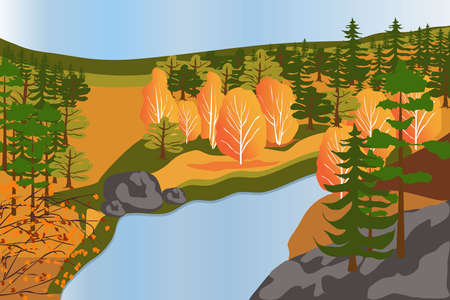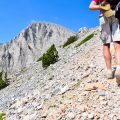Introduction to Seasonal Hiking in the Rockies
The Rocky Mountains, stretching from New Mexico all the way up to Canada, are a true hiker’s paradise and one of the most iconic landscapes in North America. What makes the Rockies stand out is their year-round appeal—each season brings something totally unique, from wildflower-filled valleys in spring to snowy wonderlands in winter. If you’re looking for adventure, you’ll find it here no matter the time of year.
Because the Rockies cover such a huge area, you’ll find everything from arid high deserts to lush alpine forests. The weather can change fast, too: sunny skies might turn stormy in an hour, or a chilly morning could warm up quickly by midday. That’s why planning for seasonal conditions is key when hiking these mountains. You don’t want to get caught in a summer thunderstorm above treeline or show up for a hike in late fall only to discover the trail is already buried under snow.
Here’s a quick look at what each season offers in the Rockies:
| Season | Typical Weather | Scenery Highlights | What to Plan For |
|---|---|---|---|
| Spring | Cool temps, lingering snow at higher elevations, muddy lower trails | Budding wildflowers, rushing creeks, wildlife activity | Prepare for wet trails and check for late-season snow closures |
| Summer | Warm days, cool nights, afternoon thunderstorms common | Lush greenery, crystal-clear lakes, peak wildflowers | Start hikes early to avoid storms and crowds; pack layers and sun protection |
| Fall | Crisp air, cooler temps, first snows at high elevations | Aspen trees turning gold, fewer crowds, clear skies | Dress in layers and watch for changing weather conditions |
| Winter | Cold temps, deep snow in many areas, shorter daylight hours | Snow-covered peaks and forests, quiet trails, chances for spotting wildlife tracks | Bring proper gear (snowshoes or spikes), check avalanche forecasts, be ready for cold conditions |
No matter which season you choose for your Rocky Mountain hike, being prepared makes all the difference. With so many climates and ever-changing scenery, there’s always something new to discover—just make sure you know what to expect before hitting the trail!
2. Spring Trails: Wildflower Blooms and Rushing Streams
Spring in the Rockies is a magical time. As the snow melts, waterfalls roar to life and wildflowers burst into color along the trails. Lower elevation hikes become accessible, making it the perfect season for both beginners and seasoned hikers to explore nature’s revival.
Top Spring Hikes in the Rockies
| Trail Name | Location | What Makes It Special? | Difficulty |
|---|---|---|---|
| Emerald Lake Trail | Rocky Mountain National Park, CO | Sweeping mountain views, abundant wildflowers, three stunning lakes | Easy to Moderate |
| Aspen Grove Trail | Grand Teton National Park, WY | Lush aspen forests, spring blooms, frequent wildlife sightings | Easy |
| Bear Lake Loop | Rocky Mountain National Park, CO | Accessible loop, great for families, vibrant wildflower patches in May/June | Easy |
| Cub Lake Trail | Rocky Mountain National Park, CO | Pond lilies in bloom, chance to spot elk and moose near water sources | Moderate |
| Boulder Falls Trail | Boulder County, CO | Dramatic waterfall fueled by snowmelt, quick hike from town | Easy |
What to Expect on Spring Trails
- Muddy & Wet Conditions: Melting snow means many trails can be muddy or have lingering patches of ice. Waterproof boots and gaiters are highly recommended.
- Breathtaking Waterfalls: This is the best time of year to catch waterfalls at their peak flow as snowmelt rushes down the mountainsides.
- Wildflower Bonanza: Look for colorful displays of Indian paintbrush, lupine, pasqueflower, and glacier lilies from late April through June.
- Cooler Temperatures: Dress in layers. Mornings can be chilly even if afternoons warm up quickly.
- Crowds Are Lighter: Compared to summer months, you’ll find fewer hikers on popular trails in spring—especially on weekdays.
Wildlife Spotting Tips for Spring Hikers
- Mammals: Elk and deer are often seen grazing in open meadows; keep an eye out for moose near streams and ponds.
- Birds: Migratory birds return to the Rockies in spring—look for western tanagers, mountain bluebirds, and hummingbirds among blooming wildflowers.
- Bears: Black bears begin emerging from hibernation. Give wildlife plenty of space and store food securely.
- Pika & Marmots: Listen for their distinctive calls among rocky outcrops!
Packing Essentials for Spring Hiking in the Rockies
- Waterproof hiking boots and gaiters
- Trekking poles for slippery sections
- Sunscreen (UV rays are strong at high elevation)
- A warm layer and rain jacket
- A camera for capturing flowers and waterfalls
- A field guide or app for identifying wildflowers and birds
If You Go: Quick Safety Reminders
- Check trail conditions before heading out; some higher-elevation routes may still have snow or be closed due to flooding.
- Avoid hiking alone during early mornings or late evenings when wildlife is most active.
- Packed parking lots? Try arriving early or choose lesser-known trails nearby.
The Rockies in spring offer a unique blend of beauty and adventure. With a little preparation, your hike will be filled with unforgettable sights—from carpets of wildflowers to thundering streams—all set against breathtaking mountain backdrops.

3. Summer Adventures: High Country Hikes and Alpine Views
Summer in the Rockies is prime time for hiking, with snow finally melting off the high trails and wildflowers bursting into color. The days are long and sunny, making it perfect for exploring alpine lakes, airy ridgelines, and those bucket-list summits. Here’s a guide to some of the best summer hikes, what to expect from the weather, and what gear you’ll want for a safe and fun adventure.
Top Summer Hiking Trails in the Rockies
| Trail Name | State/Location | Main Highlights | Level |
|---|---|---|---|
| Sky Pond Trail | Colorado (Rocky Mountain National Park) | High-altitude lakes, dramatic waterfalls, sweeping views | Moderate-Strenuous |
| Ice Lake Basin | Colorado (San Juan Mountains) | Turquoise alpine lakes, wildflowers, rugged peaks | Strenuous |
| Grinnell Glacier Trail | Montana (Glacier National Park) | Mountain vistas, wildlife spotting, glacier views | Moderate |
| Pitamakan-Dawson Loop | Montana (Glacier National Park) | Sweeping ridgelines, multiple passes, big mountain scenery | Challenging |
| Boulder Pass Trail | Wyoming (Grand Teton National Park) | Teton views, lake basins, wildflower meadows | Difficult |
What Makes Summer Hiking Special?
- Alpine Lakes: Snowmelt fills high-elevation lakes with clear blue water—perfect for a refreshing break or photo op.
- Wildflowers: Early July through August brings vibrant blooms to open meadows and slopes.
- Crisp Views: Clear skies mean you can see for miles from the top of a ridge or peak.
- Accessible Peaks: With snow mostly gone by late June, even iconic summits like Longs Peak or Mount Elbert are within reach for prepared hikers.
Typical Summer Weather Patterns in the Rockies
- Mornings: Cool and calm—often the best time to start your hike.
- Afternoons: Thunderstorms are common from mid-June through August. Lightning risk increases above treeline after noon.
- Nights: Can still be chilly at high elevations; temperatures may dip close to freezing even in July or August.
- Sun Exposure: UV rays are intense at altitude—don’t forget sunscreen and a hat!
Packing List: Must-Have Gear for Summer Hikes
| Essential Gear Item | Description/Tips |
|---|---|
| Lightweight Layers | Packed fleece or puffy jacket for changing conditions; moisture-wicking shirts work best. |
| Rain Jacket/Poncho | Sudden thunderstorms are common—always carry rain protection. |
| Sunscreen & Sunglasses | The sun is intense above 8,000 feet; protect your skin and eyes. |
| Trekking Poles | A big help on steep or rocky sections—also useful when crossing lingering snowfields. |
| Plenty of Water & Snacks | No reliable water sources on some high routes; bring extra hydration and salty snacks. |
| Map/GPS App & Compass | Trees thin out above treeline—navigation can get tricky without good tools. |
Tips for Safe Summer Hiking in the Rockies:
- Aim to be below treeline before afternoon storms roll in—start early!
- Pace yourself at higher elevations; altitude can sneak up on you if you’re not used to it.
- If you hear thunder or see lightning, descend immediately to safer ground below treeline.
The Rockies offer unforgettable summer hiking adventures with stunning scenery around every bend. With smart planning and the right gear, you’ll be ready to explore high country trails all season long.
4. Fall Excursions: Golden Aspen Groves and Crisp Air
Experience the Rockies Autumn Magic
As summer fades, the Rocky Mountains transform into a breathtaking canvas of gold and orange. Fall is a favorite time for many hikers—cooler temps, stunning aspen color changes, and fewer crowds create a peaceful outdoor adventure. Here’s how to make the most of fall hiking in the Rockies.
Top Trails for Leaf-Peeping
| Trail Name | Location | Why It’s Great in Fall |
|---|---|---|
| Maroon Bells Scenic Loop | Aspen, Colorado | World-famous golden aspen groves reflected in crystal lakes |
| Kebler Pass | Crested Butte, Colorado | One of the largest aspen groves in North America; brilliant fall colors |
| Boreas Pass Trail | Breckenridge, Colorado | Sweeping mountain views with vibrant foliage along old railroad grade |
| Lamar Valley Trail | Yellowstone National Park, Wyoming | Open meadows, elk bugling, and aspens turning gold amid wildlife viewing opportunities |
| Avalanche Lake Trail | Glacier National Park, Montana | Larch and aspen trees pop with color near alpine lakes and dramatic peaks |
Tips for Prime Fall Hiking & Leaf-Peeping
- Timing Matters: Peak aspen color usually happens mid-September to early October. Check local reports for updates.
- Dress in Layers: Mornings are chilly but afternoons can warm up quickly. Bring a light jacket and hat.
- Start Early: Trails are quieter at sunrise and you’ll catch morning light on golden leaves.
- Pack Snacks & Water: Many services shut down after Labor Day. Come prepared!
- Camera Ready: Don’t forget your phone or camera—fall colors don’t last long!
Safety During Hunting Season
Your Safety Checklist:
- Wear Bright Colors: Blaze orange or neon vests make you more visible to hunters.
- Avoid Dawn/Dusk: Hunters are most active during these hours—plan your hike for midday.
- Stick to Popular Trails: Well-traveled paths are less likely to be used by hunters.
- Check Local Regulations: Some areas may restrict hiking during hunting season. Always check before heading out.
- If You Bring Pets: Keep dogs leashed and consider fitting them with bright vests too.
The Takeaway for Fall Hikers:
The Rockies shine brightest in autumn. With the right trail choices and safety tips, you’ll enjoy a spectacular and peaceful fall getaway surrounded by nature’s finest colors.
5. Winter Wandering: Snowshoeing and Quiet Trails
Winter transforms the Rockies into a peaceful, snow-blanketed wonderland. For hikers who don’t mind bundling up, this season offers unique adventures like snowshoeing, hiking on packed trails, and enjoying stunning winter scenery with far fewer crowds.
Top Winter-Friendly Hikes & Snowshoe Trails
| Trail Name | Location | Difficulty | Highlights |
|---|---|---|---|
| Bear Lake Loop | Rocky Mountain National Park, CO | Easy | Frozen lakes, mountain views, family-friendly |
| Emerald Lake Trail | Rocky Mountain National Park, CO | Moderate | Icy waterfalls, alpine lakes, snowshoe option |
| Avalanche Lake Trail | Glacier National Park, MT | Moderate | Dense forest, quiet lake views, wildlife tracks in snow |
| Snoqualmie Pass Trails (Gold Creek Pond) | Near Seattle, WA (Cascades edge) | Easy to Moderate | Accessible snowshoeing, snowy peaks, safe terrain |
| Denny Creek Trailhead to Franklin Falls | Cascade Mountains, WA (Rockies adjacent) | Easy | Frozen waterfall, short hike, popular for beginners |
Serene Landscapes Await in Winter
The crisp air and sparkling snow create a magical atmosphere. Wildlife sightings are more common as animals leave tracks in fresh powder. The hush of winter brings a sense of calm you won’t find in any other season.
Stay Safe: Cold Weather & Avalanche Awareness Tips
- Dress in Layers: Wear moisture-wicking base layers, insulating mid-layers (like fleece or down), and a waterproof outer shell.
- Avalanche Safety: Always check the local avalanche forecast before heading out. Stick to established trails and avoid steep slopes if warnings are posted.
- Essential Gear:
| Item | Description/Why It’s Needed |
|---|---|
| Snowshoes or Microspikes | Add traction for walking on packed snow or icy paths. |
| Trekking Poles with Snow Baskets | Provide balance and stability. |
| Avalanche Beacon/Shovel/Probe* | If traveling in avalanche-prone backcountry areas. |
| Thermos with Hot Drink & Snacks | Keeps energy up and helps you stay warm. |
| GPS App or Map & Compass | Easier to get disoriented in snowy landscapes. |
*Only needed for advanced or off-trail routes—most groomed park trails do not require these but always check current conditions.
A Few More Quick Tips for a Great Winter Hike:
- Start early—winter days are shorter and it gets dark fast.
- Pace yourself; moving through snow can be tough!
- Packed trails are often icy—microspikes help prevent slips.
Breathe Deep & Enjoy the Solitude!
The Rockies in winter offer a whole new way to appreciate the outdoors. Whether you’re wandering a snowy lakeside loop or venturing out on snowshoes to hidden spots, winter hiking is all about quiet beauty and adventure—just remember to stay safe and be prepared!


